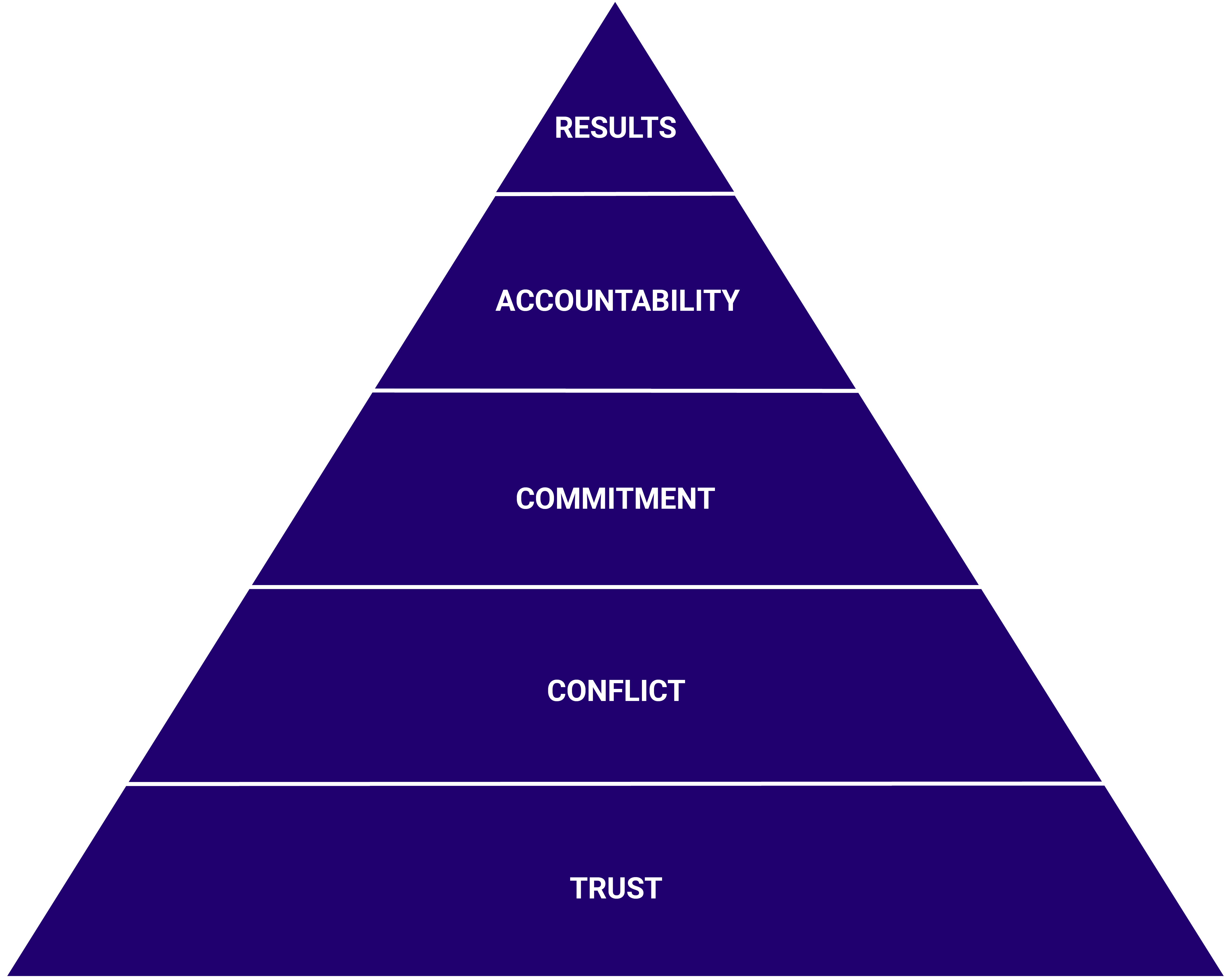
An ever-changing world
In a 2023 survey of 1,284 executives and project management professionals, a whopping 85% indicated that the number of change projects in their organisations had ‘exploded’ over the last five years.
- 25% of respondents said the number of change projects had increased by more than 50%
- 56% had seen a rise of more than 25%(1)
I’ve found this in my own experience. Rather than trending towards stability, change has become the norm with the organisations I work with. But constant change has a huge impact on organisational culture, structure, teams and, often, morale.
At its broadest level, to allow a realistic pace of change, the organisational structure needs to evolve from hierarchical to networked, with vertical as well as horizontal communication channels. This has been happening for years, at least on paper, but the transition isn’t easy and there’s often a need for investment in technology so the change isn’t hampered by legacy systems.
As for people, engagement is key, and those you recruit and retain will need to develop an adaptive, flexible and resilient mindset. Across your organisation, regular training for new and existing employees will be essential, not only to ensure they’ve got the skills for the job, but also to create opportunities for profile raising and relationship building
Example
Jodie used to work in a company that rewarded presenteeism. They paid employees according to hours spent in the office, even if those hours were spent chatting round the photocopier rather than working at a desk.
She was seconded to a work:life balance project which concluded that employees should be rewarded based on deliverables. It wouldn’t matter if they worked at home, during evenings or weekends, nor whether they were quick or slow, their perceived success would be based on output.
The aim was that productivity would go up. However, the management team were not confident they could monitor remote workers effectively, and the project was pulled. It was just too big a shift for them. In the long-term, the business failed to survive.

What is it like to be in a newly formed team?
Over the past couple of years, I’ve worked with newly formed teams in various organisations to ensure they have the vision and strategy in place to deliver results. Although establishing ways of working is an important part of this, more valuable at the outset is creating an environment where people can get to know each other.
Every organisation is made up of human relationships. So I always suggest that you think of the experience from the team members’ point of view.
When things change, your people may be required to let go of old ways of working and adopt new ones, alongside getting to know new colleagues and showcasing their expertise. Recognise that this can be unsettling for them – a bit like embarking on a whole new job. This uncertainty can put them under stress, and means that engagement and loyalty can dip.
Let’s look at some of the key considerations when leading a new team…
What you’ll need from them
As well as engagement and loyalty, here are just a few things to aim for:
- You want individual team members to pull together cohesively, and quickly.
- You want them all to feel comfortable and motivated to contribute.
- You want them to share the vision and be successful at achieving the project goals.
- You probably want regular communication from them so you are aware of any problems early, and so you can celebrate their achievements when things go well.
- You need them to be open, honest, vulnerable and collaborative.
What your team needs from you
One of my favourite resources for strategic teambuilding is Patrick Lencioni’s The Five Dysfunctions of a Team which was published in 2002. The book identifies the fundamental causes of organisational politics and team failure as:
1) Absence of trust
2) Fear of conflict
3) Lack of commitment
4) Avoidance of accountability
5) Inattention to results
You might have read it too? It seems obvious to me that the reverse of these dysfunctions reveal the five main behaviours of high-performing teams, behaviours you’ll need to proactively elicit from your people to get the best outcomes from all:
1) High trust
2) Positive conflict
3) Commitment to the team
4) High accountability
5) Focus on results
 Caption: Lencioni’s Five Behaviours of High Performing Teams
Caption: Lencioni’s Five Behaviours of High Performing Teams
So how, as a leader, can you address those five areas? Here are my recommendations:
1. To build trust
Simply put, if you don’t trust your people, your people won’t trust you. And so, to develop a high trust environment, it’s important for you to take time out to understand where they’re coming from and what they need from you. Have a ‘listening & diagnosis’ phase where you ask each individual for their perspective and show them you value their experience and opinion.
Get to know the individuals and what makes each of them tick. Understand their personalities, talents, goals, strengths and weaknesses.
“If I were to summarize in one sentence the single most important principle I have learned in the field of interpersonal relations, it would be this: Seek first to understand, then to be understood.”
Dr. Stephen R. Covey
2. To allow positive conflict
When working with new teams, I’ll often find a resistance to rocking the boat. People are ‘too nice’ and don’t want to stick their head above the parapet for fear of repercussions. Instead of avoiding conflict, leaders should create an environment of positive conflict where it’s OK to say ‘no’ and disagree. Alongside this, as a steady state, foster a positive working environment. In the world of improvised comedy, there’s a principle of “Yes and”, meaning that whatever your scene partner gives you, you accept their reality and build on it.
For example, if they say: “Here’s some chocolate for you”, you don’t reply: “That’s not chocolate, that’s a pile of mud”. But you might say: “Thanks, you know how much I love chocolate” or “Why did you give me chocolate? You know I’m allergic.”
In the world of project teams, imagine how positive (literally) a “Yes and” culture would be! Every idea gets accepted and built on – that doesn’t mean it ultimately gets used. It inspires creativity and contribution, and is the opposite of a “No” or “Yes but” culture, which quickly stifles innovation.

3. To show commitment to the team
Be visible. As the team leader, you can’t set up (or inherit) a new team and abdicate all responsibility to them. It’s a fine balance between looking over their shoulders all the time or being invisible and irrelevant.
As every team dynamic is different, I advise leaders to proactively negotiate with team members to understand the balance of support and challenge they need, and avoid getting so tied up in their own tasks that they neglect the team they’re supposed to be leading.
It’s generally not enough to say, “My door is always open”, as people will rarely take you up on your offer. Equally, avoid simply asking if any one has any questions in a meeting as the standard response will be “No”. More effective is checking in with the team once or twice a week (or whatever frequency you agree with them). Maybe keep a window in your calendar when they know they can reach you. And in meetings, ask people to comment on what’s being discussed or ask them by name to share their questions.
You need to ensure every member has equal access to you. As always, communication is key. Be aware there are special skills when dealing with hybrid and remote teams. I often help organisations to identify and enhance these skills so their projects run smoothly.
4. To maintain high accountability
Establish the ground rules. Everyone on the team needs to know the outcome, who’s doing what and when, how progress will be measured, and how feedback will be given. Don’t make assumptions.
I have access to many resources you might find useful to help with this. One such tool is RACI charting. Make a list of who is Responsible for each task, who is Accountable (usually just one person), who needs to be Consulted and who needs to be Informed. Many leaders find Roger Connors and Craig Hickman’s Accountability Ladder a useful model for understanding people’s attitudes towards a task and what they can do to increase engagement in teams.
When individual team members know they will be held solely accountable for achieving a task, they have no excuse but to put it high on their priority list. It’s clear who makes which decisions. They can’t pass blame.
It also means you have to trust people enough to delegate to them. Trust goes both ways.

5. To focus on results
As James Kouzes and Barry Posner say in The Leadership Challenge, good leaders rally people round a shared understanding of where the team is going and why.
According to the EY Beacon Institute, purpose-driven companies are 2.5 times better at driving innovation and transformation than other companies(2).
Deloitte says that, on average, purpose-driven companies report 30% higher levels of innovation and 40% higher levels of workforce retention than their competitors(3).
In the HBR article linked above, they point out that most change projects use financial goals, such as a 10% return on investment (ROI). Yet these goals don’t inspire people to commit passionately to the change initiative.
I find that, besides having a business case, a project should be linked to a higher purpose. When people work on a project that connects to their inner purpose and passions, they can achieve extraordinary things.
It’s therefore important to align your messaging with the ‘heart and minds’ of your people.
For more on the importance of purpose, please see my recent article: Why having a purpose is so important at work.
What next?
My team does a lot of work in the team-building area, as part of the leadership development programmes we run in partnership with our clients. This isn’t raft building or spaghetti towers, but a step by step approach which moves a disparate group of individuals together to form what they recognise as a team.
If you found this information useful, you might also like to read my article Leading through change: Avoiding the common pitfalls
I partner with organisations to prepare their leaders for change in various ways and have created a proprietary methodology that maps out a pathway for strategic change communication.
- To reach a large audience, book Antoinette as a keynote speaker
- To discuss how to strategically engage your leaders through change, book a call to discuss her bespoke consultancy
- For guidance on leading with gravitas through change and transformation, read Antoinette’s book Leading With Gravitas
Sources
(1) https://hbr.org/2023/05/organize-your-change-initiative-around-purpose-and-benefits

About the author
Antoinette Dale Henderson is a leadership coach, speaker, and author specialising in executive presence and gravitas. With over 25 years in communications, she empowers leaders to increase their influence and impact through her Gravitas Programme and best-selling books, Leading with Gravitas and Power Up.

